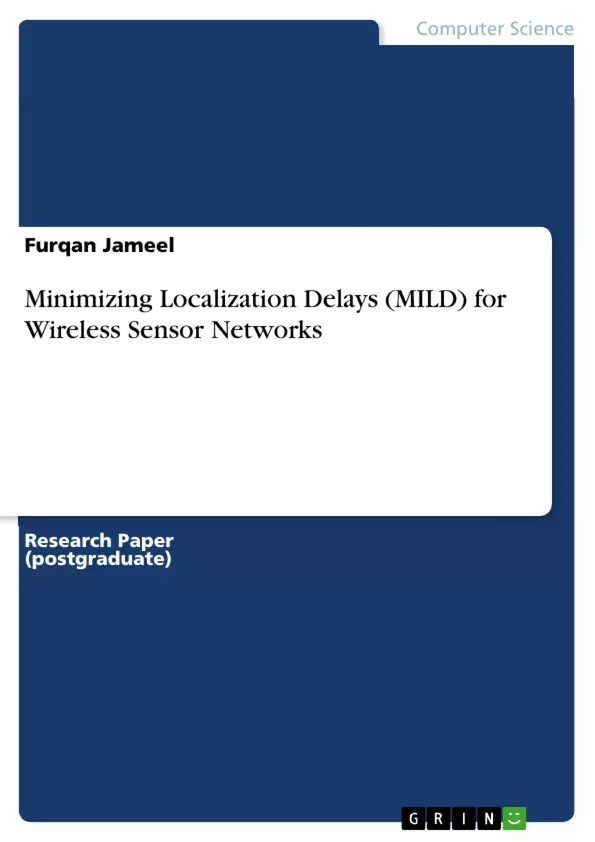Due to the success of rapidly evolving wireless sensor networks (WSN), innovating localization techniques have been proposed by researchers all over the world. Since wireless sensor nodes are small devices with limited processing power and the channel conditions are difficult to predict, therefore, there is a desperate need of a low complexity algorithm that can efficiently identify channel condition and select an appropriate method of localization.
Related to this, I present in this article a novel localization scheme that is very efficient in detecting the location in real world environment which is usually a mixed case of line of sight and non-line of sight. Simulation results show that this scheme reduces the delays in localization and increases the lifetime of nodes while maintain a fairly low mean estimation error. The results also demonstrate that this scheme performs fairly well even when there are limited numbers of anchor nodes.
Frequently Asked Questions about Localization Techniques in Wireless Sensor Networks
What is the main focus of this article?
This article primarily focuses on improving localization techniques in Wireless Sensor Networks (WSN). It aims to develop a scheme that reduces delays, utilizes minimal energy, and maintains a low position estimation error, making it suitable for highly mobile sensor nodes.
What are the key themes and objectives discussed in this article?
The key themes include:
- Developing an efficient and low-complexity localization algorithm.
- Improving the accuracy of location detection in mixed line-of-sight (LOS) and non-line-of-sight (NLOS) environments.
- Reducing delays in localization and increasing the lifetime of sensor nodes.
- Achieving good performance even with a limited number of anchor nodes.
What localization techniques are discussed in this article?
The article discusses two main localization techniques:
- Trilateration: A method of obtaining the relative position of a point in space by measuring distances, using geometrical shapes like triangles and circles.
- Multilateration: A localization scheme, specifically Nonlinear Least Square Multilateration, used to estimate the location of a node iteratively.
How does the proposed localization scheme work?
The proposed scheme is a selective scheme based on Received Signal Strength (RSS) and involves the following major tasks:
- An unsettled node receives broadcast messages from anchor nodes.
- The unsettled node calculates the variance of the RSS from these anchor nodes to estimate whether a particular node has line of sight.
- This information is sent to the sink node.
- Based on the analysis and the number of LOS nodes, the unsettled node or the sink node selects between trilateration and multilateration to estimate its position.
What is the significance of variance of RSS in this scheme?
The variance of RSS is used to predict the channel condition (LOS or NLOS). Higher variance typically indicates a NLOS condition due to greater channel variations, while lower variance indicates a LOS condition.
How does the proposed scheme handle different channel conditions (LOS vs. NLOS)?
The scheme adapts its method based on the channel conditions:
- Case 1 (3 or more nodes have LOS): Trilateration is used by the unsettled node because distance calculations are likely to be more accurate.
- Case 2 (Less than 3 nodes have LOS): Multilateration is used by the sink node, since trilateration could give a greater error with less nodes.
Why is the proposed scheme considered efficient in terms of delay?
The scheme reduces localization delay by:
- Using a simple variance calculation for channel prediction, which doesn't introduce significant computational overhead.
- Employing trilateration when possible which relies on direct matrix operations which can be completed on the sensor node.
- Offloading the potentially expensive computation of multilateration to the sink node in less ideal scenarios.
How does the proposed scheme contribute to energy efficiency?
Energy efficiency is achieved by:
- Using trilateration when a sufficient number of anchor nodes are within LOS, reducing the necessity for further communication.
- Transmitting data from the sensor node to the sink node.
What is the purpose of the performance evaluation in this article?
The performance evaluation aims to demonstrate the effectiveness of the proposed scheme in terms of delay reduction and energy consumption, while maintaining a reasonable level of accuracy in position estimation.
What are the key parameters considered in the energy consumption model?
The key parameters include:
- Energy dissipation rate to run the radio.
- Path loss coefficient.
- Energy dissipation rate to run the transmitter amplifier.
- Data length.
- Arbeit zitieren
- Furqan Jameel (Autor:in), 2016, Minimizing Localization Delays (MILD) for Wireless Sensor Networks, München, GRIN Verlag, https://www.hausarbeiten.de/document/337114


